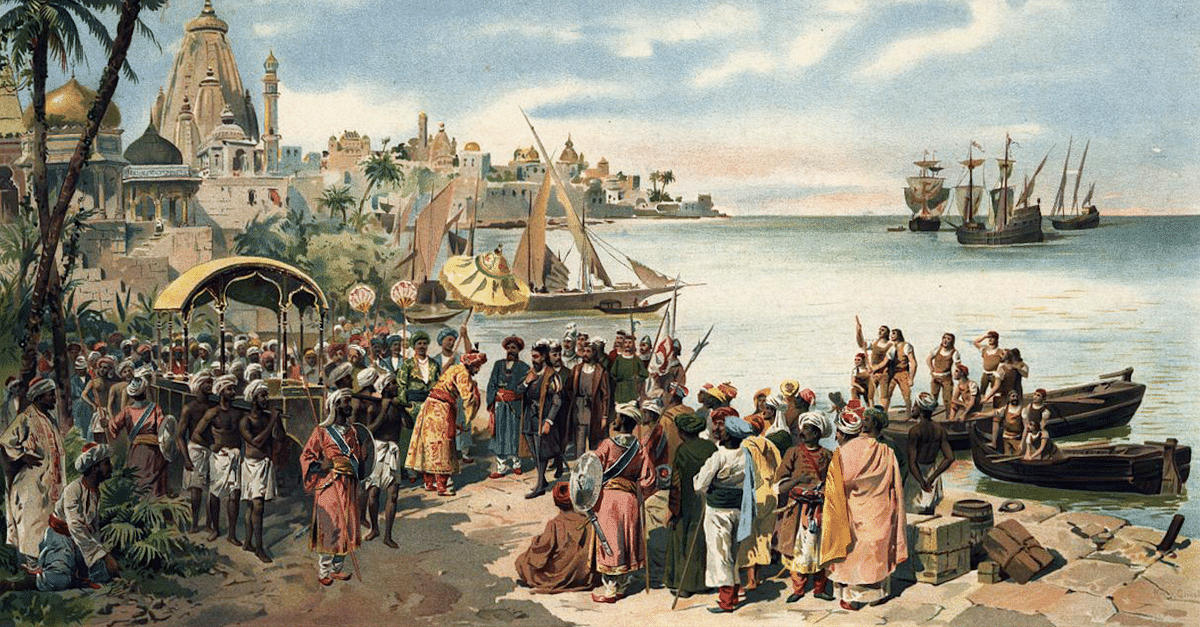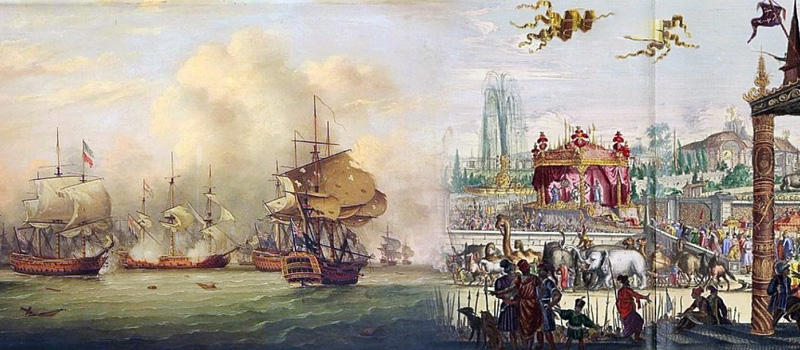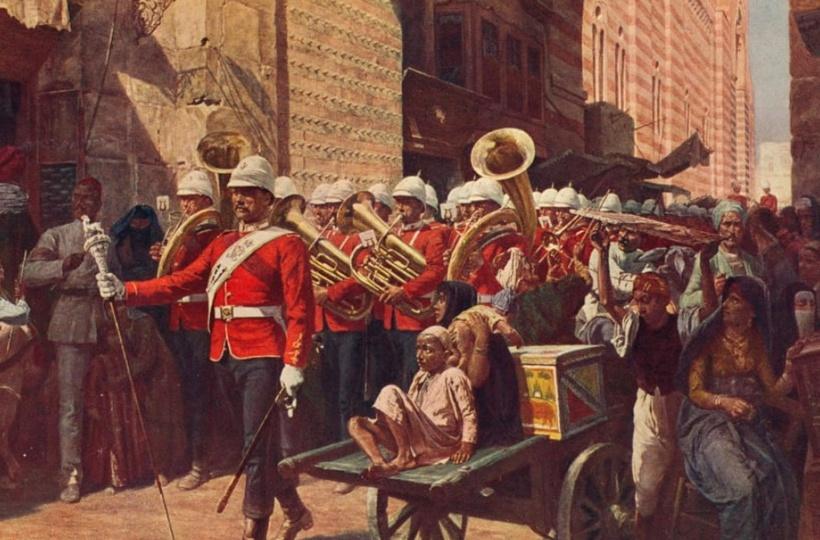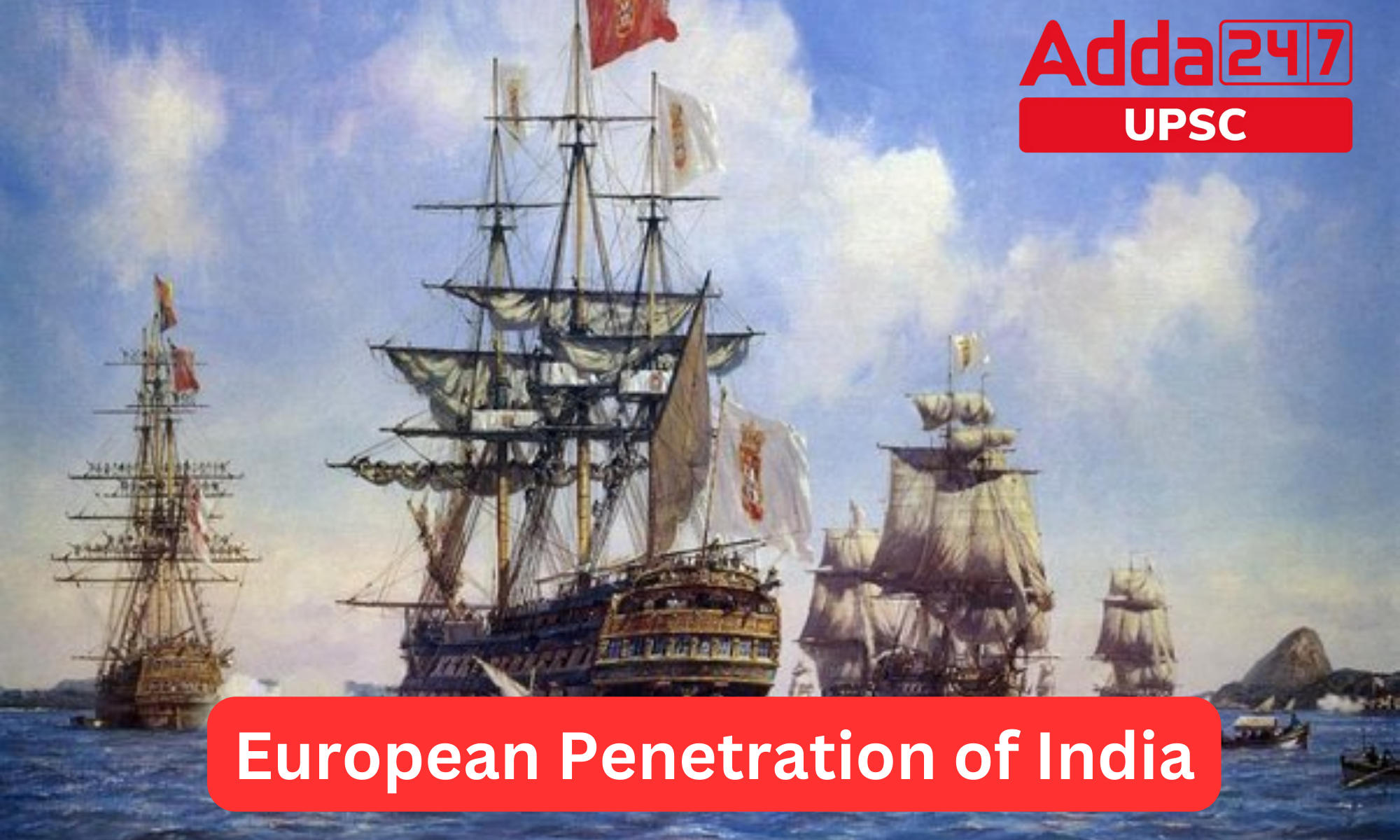Table of Contents
European Penetration of India
The European penetration of India is a crucial aspect of the country’s history that has greatly influenced its development and culture. Beginning with the arrival of the Portuguese in the late 15th century, European powers gradually gained a foothold in India, ultimately leading to colonial rule and significant changes in Indian society.
European Penetration of India: The Beginning
The Portuguese were the first Europeans to establish a presence in India, arriving in 1498 under the leadership of Vasco da Gama. Their main objective was to establish a trade route to India and gain access to the country’s rich resources, particularly spices. Over time, the Portuguese established several trading posts and forts along India’s west coast, including Goa, which became the center of their colonial presence in the country.
- The Portuguese were followed by the Dutch, who arrived in India in the early 17th century.
- They established trading posts along India’s east coast and gained control of several important ports, including Pulicat and Nagapattinam.
- The Dutch also established a strong presence in the spice trade and were particularly interested in the cultivation of nutmeg and cloves.
- The British arrived in India in the early 17th century as well, initially as traders.
- Over time, they established themselves as a major political force in the country, gradually extending their control over large parts of India.
- The British East India Company, which was granted a royal charter in 1600, played a central role in this process, eventually assuming control over large parts of India and becoming the de facto ruler of the country.
- The French also established a presence in India in the 17th century, primarily in the south.
- They established several trading posts and gained control of several important ports, including Pondicherry and Chandernagore.
- However, their influence in India was limited compared to that of the British.
Impact of European Penetration of India
- The impact of European penetration on India was significant.
- The establishment of European trading posts and the growth of the European presence in India led to the growth of a new class of Indian elites who were closely tied to European interests.
- This class, known as the “brown sahibs,” played a key role in the British colonial administration of India.
- The European penetration of India also had a profound impact on Indian society and culture.
- European ideas and values, including Christianity, liberalism, and nationalism, began to spread in India, influencing the development of Indian political and social thought.
- At the same time, Indian culture and traditions came under increasing pressure from European colonialism, leading to a gradual erosion of traditional Indian practices.
In conclusion, the European penetration of India was a key event in the country’s history, ultimately leading to the establishment of European colonial rule and significant changes in Indian society and culture. While the impact of European penetration was both positive and negative, it remains an important chapter in the history of both India and Europe.
European Penetration of India: Portuguese Penetration of India
The Portuguese Penetration of India was a significant period of colonial history that lasted for over 450 years. It all started when Vasco da Gama, a Portuguese explorer, landed in Calicut, India, in 1498. This event opened the doors to the first European colony in India and marked the beginning of Portuguese rule over parts of India.
- The Portuguese were initially interested in trading with India, which was a rich source of spices, silk, and other luxury goods.
- They established a trading post in Goa, which became the center of their operations.
- However, the Portuguese soon realized that they could not compete with the powerful Indian merchants and rulers, who controlled the lucrative spice trade.
- To secure their position, the Portuguese turned to military force.
- They launched a series of naval attacks on Indian ports and established a string of fortified bases along the Indian coast.
- They also hired Indian mercenaries and formed alliances with local rulers to help them in their military campaigns.
- By the early 16th century, the Portuguese had established their dominance over the western coast of India.
- They controlled Goa, Daman, Diu, and other territories along the coast.
- They also established a trading post in Bombay (now Mumbai), which would later become the center of British rule in India.
- The Portuguese were known for their brutal tactics and often resorted to violence to maintain their rule.
- They destroyed Hindu temples, persecuted non-Christian religions, and forced Indian converts to adopt Portuguese culture and language.
- Despite their aggressive tactics, the Portuguese were never able to establish a unified empire in India, and their rule was limited to a few scattered outposts along the coast.
- The Portuguese influence in India began to decline in the 17th century, as other European powers began to challenge their dominance.
- The Dutch, French, and British all established trading posts in India and gradually eroded the Portuguese control over the spice trade.
- By the late 18th century, the Portuguese had lost most of their territories in India and were reduced to a few small enclaves along the coast.
- Despite their limited influence, the Portuguese left a lasting legacy in India.
- They introduced European technology, architecture, and language to India and played a significant role in shaping the culture and identity of the coastal regions of India.
- The Portuguese also left a lasting impact on Indian cuisine, with dishes like vindaloo and sorpotel still popular in Goa and other parts of India today.
In conclusion, the Portuguese Penetration of India was a crucial period of colonial history that shaped the course of Indian history. While their rule was marked by brutality and violence, the Portuguese also played a significant role in shaping Indian culture and identity. Today, the legacy of the Portuguese in India remains a testament to the complex and intertwined history of these two great civilizations.

European Penetration of India: Dutch Penetration of India
The Dutch penetration of India is an important chapter in the history of colonialism in the Indian subcontinent. The Dutch East India Company, also known as the Vereenigde Oostindische Compagnie (VOC), established trading posts and colonies in various parts of India in the 17th and 18th centuries. We will explore the motives behind Dutch penetration of India, the impact of their presence, and their eventual decline.
- The Dutch first arrived in India in the early 17th century, primarily for trade.
- The VOC established its headquarters in Batavia (present-day Jakarta) in the Dutch East Indies and began to expand its operations in the Indian Ocean.
- The primary aim of the VOC was to control the lucrative spice trade, which involved the exchange of spices from the East Indies for Indian textiles, which were then sold in Europe.
- The Dutch established their first trading post in India in 1605 at Masulipatnam on the Coromandel Coast.
- They later established posts at Surat, Cochin, and Nagapatnam.
- These posts allowed the Dutch to establish direct trade links with the Indian subcontinent and to bypass the Portuguese, who had been dominant in the Indian Ocean for over a century.
- One of the most significant impacts of the Dutch presence in India was on the textile industry.
- Indian textiles, particularly cotton and silk, were highly valued in Europe, and the Dutch established a monopoly on the export of these textiles.
- The VOC set up weaving centers in Surat, Ahmedabad, and Masulipatnam, where Indian weavers were trained in Dutch techniques, resulting in a unique blend of Indian and Dutch styles.
- The Dutch also made significant contributions to the maritime infrastructure of India.
- They established a system of lighthouses along the coast, making navigation safer for ships.
- The VOC also contributed to the development of ports such as Cochin and Nagapatnam, which became important trading centers.
- However, the Dutch presence in India was not without its challenges.
- The VOC faced competition from the British and the French, who were also expanding their presence in India.
- The Dutch were also involved in numerous conflicts with local rulers, such as the Zamorin of Calicut and the Marathas.
- The decline of Dutch penetration of India began in the late 18th century. The VOC had faced financial difficulties due to wars with Britain and the decline in the spice trade.
- The Dutch government nationalized the company in 1799, and the VOC was dissolved.
- The British took control of the Dutch colonies in India during the Napoleonic Wars, and the Dutch were left with only a few small trading posts in India.
In conclusion, the Dutch penetration of India had a significant impact on the subcontinent. The Dutch presence led to the development of the textile industry and the establishment of maritime infrastructure. However, competition with other European powers and conflicts with local rulers ultimately led to the decline of the Dutch in India. Today, the legacy of Dutch penetration of India is visible in the unique blend of Indian and Dutch styles found in textiles and architecture in the region.

European Penetration of India: French penetration of India
The French first arrived in India in the 17th century, and their presence was marked by the establishment of trading posts and the colonization of several territories. The French East India Company was established in 1664 and had its headquarters in Pondicherry, which became the hub of French trading activities in India.
- One of the significant reasons for French penetration into India was their rivalry with the British, who had also established their presence in India through the East India Company.
- The French had a long-standing conflict with the British, and India was one of the theaters where the two colonial powers clashed.
- The French presence in India was not limited to just trading.
- They also established a strong cultural connection with the country.
- The French were known for their appreciation of Indian culture, especially its art and literature.
- Many French scholars, writers, and artists were inspired by Indian culture and produced works that reflected this influence.
- One of the most notable examples of French influence on Indian art and culture is the French influence on Indian classical dance forms.
- In the early 20th century, French artists and scholars such as Romain Rolland and Louis Frédéric were instrumental in promoting and popularizing Indian classical dance forms in Europe.
- This led to a resurgence of interest in Indian dance forms in India as well.
- The French also had a significant impact on Indian cuisine. French cuisine influenced Indian cuisine, especially in the preparation of sauces and gravies.
- This resulted in the creation of new dishes such as Chicken Chasseur, which is a fusion of French and Indian cooking styles.
- The French presence in India lasted until the mid-20th century when India gained its independence from British rule.
- After independence, the French territories in India, including Pondicherry, were incorporated into the Indian union.
- Today, the legacy of French influence can still be seen in India, especially in its art, culture, and cuisine.
In conclusion, the French penetration of India was a significant chapter in the country’s history. The French left an indelible mark on India’s art, culture, and cuisine, and their presence in India played a crucial role in shaping the country’s identity. Despite the conflict and rivalry between the French and the British, their contributions to India’s cultural heritage are significant and will continue to be remembered and celebrated.

European Penetration of India: British Penetration of India
The British penetration of India is a complex and controversial topic, with far-reaching implications for both India and Britain. We will explore the history of British involvement in India, examining the factors that led to their penetration, the effects it had on the Indian subcontinent, and the legacy that remains today.
British Conquest of India, Notes for UPSC
- The British first arrived in India in the early 1600s, when the East India Company was established to facilitate trade between England and the Indian subcontinent.
- Initially, the Company’s focus was on obtaining valuable commodities such as spices, textiles, and tea, which could be sold in Europe for significant profits.
- However, over time, the Company’s involvement in India deepened, as it expanded its operations and gradually gained control over large swathes of the country.
- One of the key factors that facilitated British penetration of India was the disunity and fragmentation of Indian society.
- Prior to the arrival of the British, India was a collection of distinct kingdoms and principalities, each with its own culture, language, and customs.
- This made it easy for the British to divide and conquer, playing off one group against another to gain advantages and establish dominance.
- Another factor that contributed to British penetration was their technological superiority.
- The British had access to modern firearms, advanced naval technology, and sophisticated military tactics, which allowed them to overcome local resistance and establish control over large areas of India.
- They also had superior administrative skills, which enabled them to establish a system of governance that was more efficient and effective than anything that had existed in India before.
- However, the British penetration of India was not without its costs.
- The subcontinent experienced significant economic exploitation as the British extracted resources and wealth from the country.
- The British also imposed their own culture and values on India, eroding traditional practices and undermining local identity.
- They also used religion as a means of control, pitting Hindus and Muslims against each other and creating tensions that persist to this day.
- The legacy of British penetration of India is still felt today, both in India and in Britain.
- In India, the country’s modernization owes much to British influence, with the introduction of Western education, modern infrastructure, and democratic institutions.
- However, India also suffers from the ongoing effects of colonialism, with deep-rooted inequalities and social hierarchies that have been difficult to overcome.
- In Britain, the legacy of British penetration of India is also complex.
- Many British people view the country’s colonial past with pride, seeing it as a time when Britain was a global superpower and a force for good in the world.
- However, there is also growing recognition of the harm that was done to India and other colonized countries, and a growing movement for reparations and reconciliation.
In conclusion, the British penetration of India was a complex and multifaceted process that had both positive and negative effects. While it contributed to India’s modernization, it also resulted in economic exploitation, cultural erasure, and ongoing social inequalities. The legacy of British penetration of India is still felt today, both in India and in Britain, and continues to shape the relationship between these two countries.




 TSPSC Group 1 Question Paper 2024, Downl...
TSPSC Group 1 Question Paper 2024, Downl...
 TSPSC Group 1 Answer key 2024 Out, Downl...
TSPSC Group 1 Answer key 2024 Out, Downl...
 UPSC Prelims 2024 Question Paper, Downlo...
UPSC Prelims 2024 Question Paper, Downlo...
